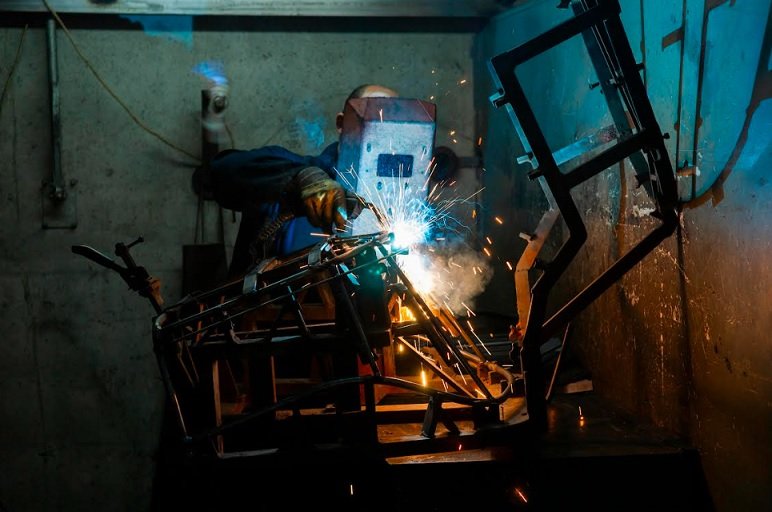
Welding is a highly skilled trade that comes with unique challenges and potential hazards. It requires attention to safety to protect against risks like burns, eye injuries, and exposure to harmful fumes. Whether you’re working on a large industrial project or honing your craft in a smaller setting, understanding the best practices for staying safe can make a big difference. This article explores five practical safety tips that can help create a secure and efficient welding environment while minimizing risks to your health.
Understanding the Importance of Proper PPE
Proper Personal Protective Equipment (PPE) is important in welding to safeguard workers from hazardous conditions such as heat, sparks, and harmful UV radiation. The intense nature of welding exposes individuals to risks like burns, eye injuries, and respiratory issues caused by fumes and particles. PPE acts as a barrier, reducing the likelihood of injuries and long-term health problems. By wearing the right gear, such as helmets, gloves, and respiratory protection, welders can focus on their tasks with greater confidence, knowing they are taking steps to protect their well-being in a potentially dangerous environment.
Ensuring Proper Ventilation and Fume Safety
Proper ventilation and fume safety are key aspects of maintaining a safe welding environment. Welding produces fumes and gases that can contain harmful substances, such as metal oxides and toxic chemicals, which may pose serious health risks when inhaled over time. Without adequate ventilation, these fumes can accumulate in the workspace, potentially leading to respiratory issues or long-term health problems. By ensuring proper airflow and addressing fume exposure, welders can reduce their risk of breathing in hazardous particles, creating a healthier and safer workspace overall.
Protecting Your Eyes With the Right Welding Helmet
Welding helmets play a key role in protecting your eyes and face from the hazards associated with welding, such as intense light, sparks, and debris. The bright arc generated during welding emits ultraviolet (UV) and infrared (IR) radiation, which can cause serious eye injuries like photokeratitis, also known as “welder’s flash,” and long-term damage to your vision. A good passive or pancake welding hood helps shield your eyes from these harmful rays while also providing a clear view of your work. Additionally, it prevents flying metal fragments or hot slag from reaching your face, reducing the risk of burns or other injuries. Investing in a reliable helmet safeguards your health and allows you to work with confidence and precision.
Wearing Fire-Resistant Clothing and Gloves
Wearing fire-resistant clothing and gloves is important for protecting welders from the high levels of heat, sparks, and molten metal that are common in welding work. Regular fabrics can easily catch fire or melt when exposed to these hazards, putting the welder at risk of severe burns or injuries. Fire-resistant materials are specially designed to withstand intense heat and prevent flames from spreading, offering a reliable barrier between the welder and potential dangers. Gloves made from heat-resistant materials not only shield the hands from burns but also provide protection against sharp edges and abrasive surfaces often encountered during welding tasks. Investing in proper protective gear helps reduce the risk of accidents and promotes a safer working environment.
Maintaining a Safe and Organized Work Environment
Maintaining a safe and organized work environment in welding is important for both safety and efficiency. A well-organized workspace reduces the risk of accidents, such as tripping over loose tools or wires, and ensures that safety equipment is easily accessible when needed. Proper organization also minimizes distractions, allowing welders to focus on their tasks and reduce errors. Additionally, maintaining a clean environment helps prevent the buildup of hazardous materials, such as flammable debris, which can increase the risk of fires or other dangers. By keeping the workspace tidy and orderly, welders can create a safer and more productive atmosphere for themselves and others.
Welding is a skill that opens up numerous opportunities, but it also comes with its own set of risks. By understanding and implementing safety measures like using the right PPE, ensuring proper ventilation, protecting your eyes, wearing fire-resistant gear, and keeping your workspace organized, you can significantly reduce those risks. Safety doesn’t just protect your well-being—it also allows you to work more confidently and effectively. Whether you’re a seasoned professional or just starting out, prioritizing safety creates a foundation for a long and successful welding journey. Stay safe, and happy welding!




